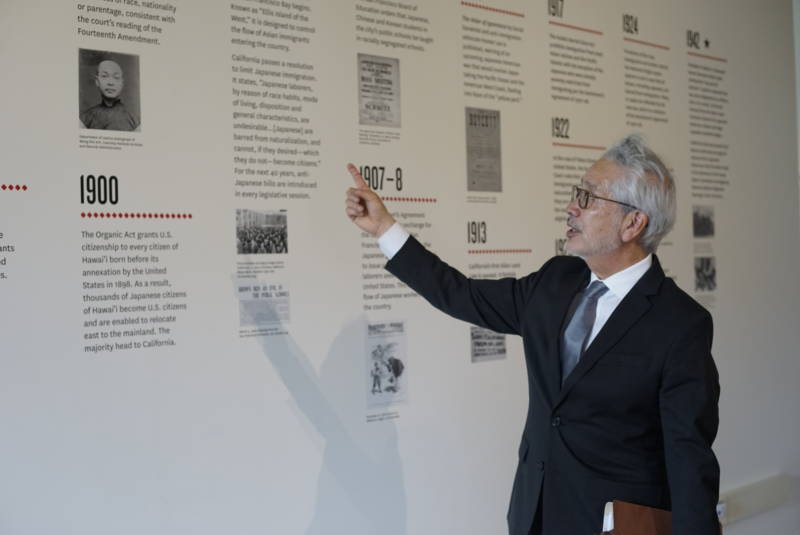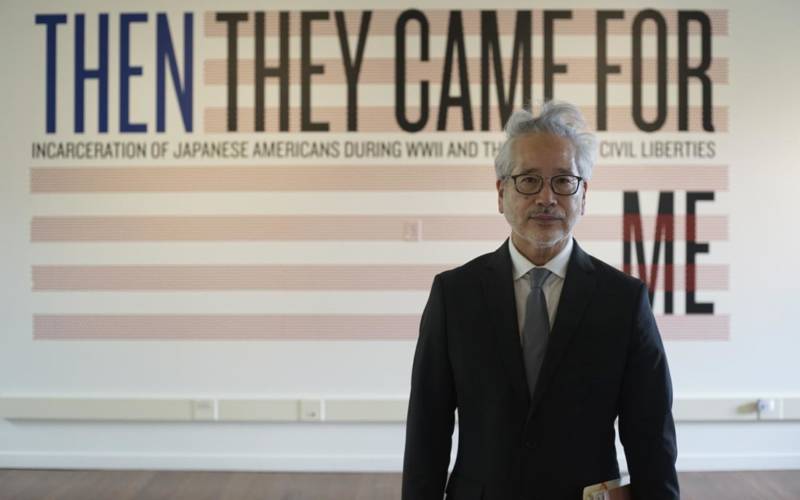On a summer day in San Francisco clear enough to see beyond the Golden Gate Bridge from the Presidio, I walked into the building at 100 Montgomery Street for an exhibition of photos taken from a particularly ugly time period in America’s history—during Japanese internment.
The exhibition, Then They Came For Me, not only shows images from the mass roundup and internment of Japanese Americans during World War II, but also acknowledges the connection to the current day as the United States keeps thousands of people immigrating to the U.S. in facilities best described as concentration camps.
One of the people who sees that connection quite clearly is civil rights lawyer Don Tamaki, who guided me around the exhibition. His family lived through internment in the early 40s; he told how his father’s degree from UC Berkeley was mailed to a horse stable at the Tanforan Racetrack in San Bruno, where the family had been forced to live.

Years later, informed by his family’s experience, Tamaki used his education to bring light to the wrongdoings of the U.S. government. He was a part of the team to reopen the landmark Supreme Court case Korematsu v. the United States, and to help Fred Korematsu win exoneration for refusing to be interred due to his race.
As Tamaki and I walked and talked among the exhibition’s photos—the majority taken by Dorothea Lange—he pointed out their mostly Northern Californian locales. Tamaki noted how the Japanese Americans in the photos wore their “Sunday best,” in attempt to look like the dignified Americans they were. And he made it clear that while the events happened 75 years ago, it is still chillingly relevant to this day.



